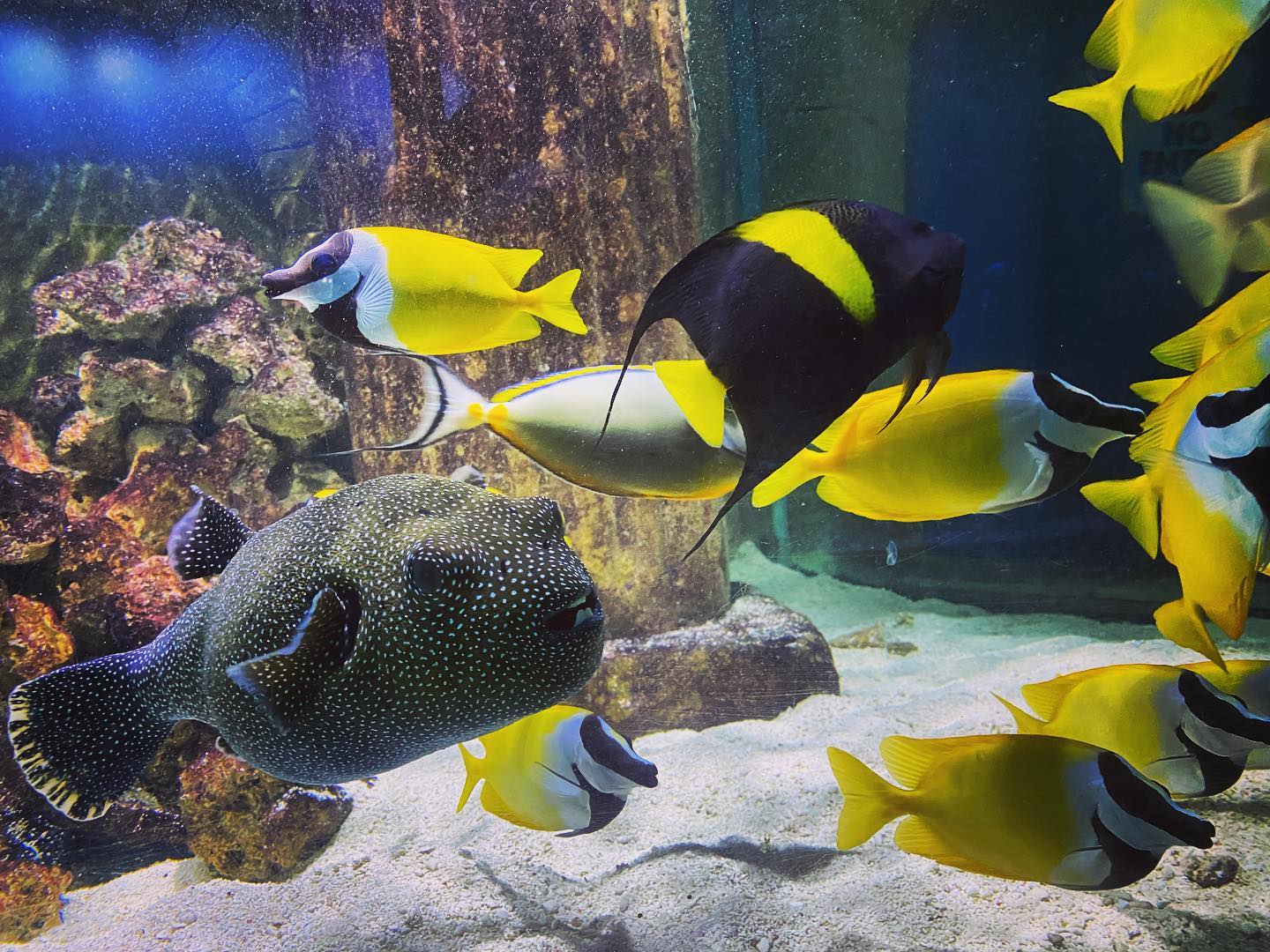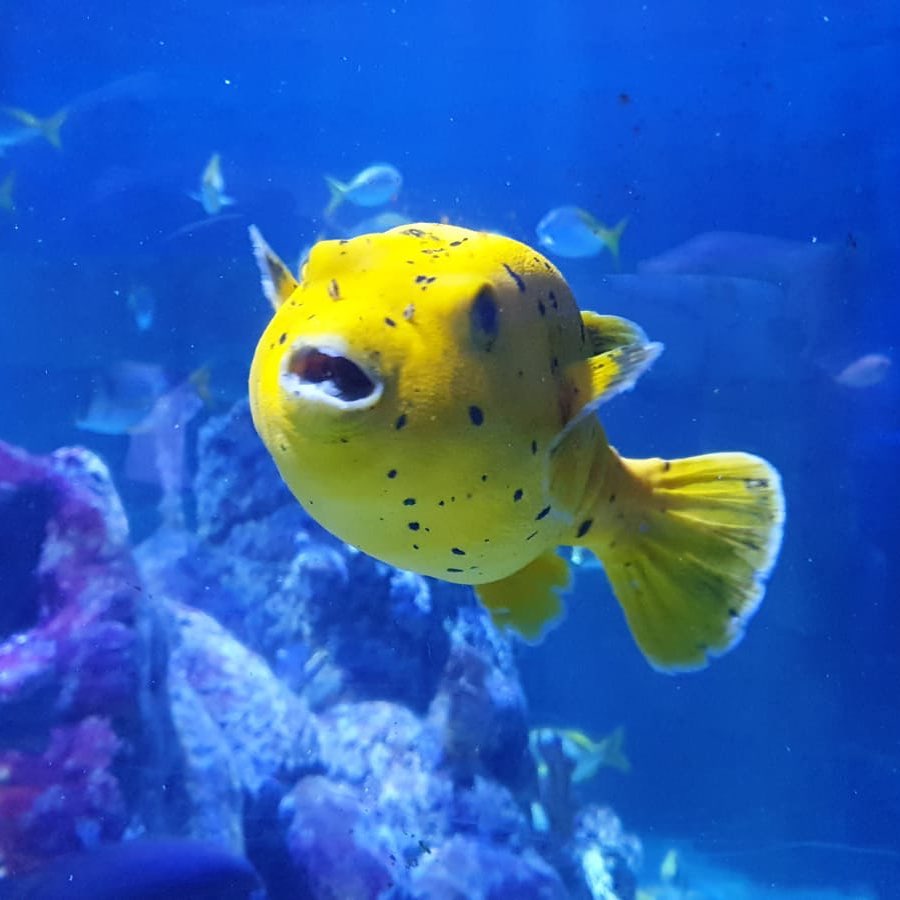
Guineafowl Puffer is found in tropical waters in the Pacific and Indian Oceans. They are most commonly found in coral reefs as this allows them protection from predators and ample food sources as the feast mainly on corals. They are uncommon to come across in the wild however are able to produce large populations in one area.
They are thought to resemble a guinea fowl which is where their name derives from. Their two top teeth are fused together which creates a beak type structure. They are normally brown or black in colour and covered in white spots however there are rare guineafowl puffers who are bright yellow with relatively few black spots. Both of these versions can be found swimming in the same groups. They have the ability to move their eyes independently of each other so with occasionally swim at an angle to keep their eyes on any perceived threat.
Type
Scaleless fish
What do they eat?
Reef Organisms e.g. branching and soft corals
Size
50cm
Water Type
Tropical salt water
Where are we?
Indian and Pacific oceans.
See Us At
Tropical Seas
The Guineafowl Pufferfish is not a very strong swimmer so living in the tropical seas is very dangerous as there are hundreds of potential predators. Like all pufferfish this genus is able to inhale water to help expand their body and make them more intimidating and more challenging to consume for predators. Once their threat has disappeared they use their muscles along their abdomen to release the water. Even if a predator was able to eat the pufferfish they would be more than likely to also die as the guineafowl is full of a poisonous toxin than would be released within the predator. Due to their poisonous nature they are relatively undisturbed by humans who only catch them to sell within the pet and aquarium trade rather than to eat.
